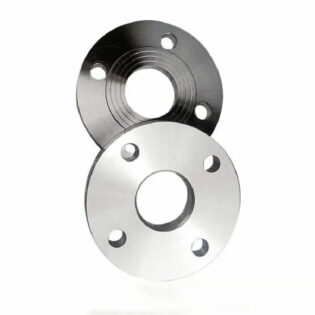Hastelloy C-4 Açıklama
Hastelloy® C-4 bir Hastelloy® kalitesidir bu bir nikel-molibden alaşımıdır. C-4'ü de içeren birçok farklı Hastelloy® kalitesi vardır. Hastelloy® kalitelerinin her biri belirli bir amaç için optimize edilmiştir. Molibden Hastelloy®'u yüksek sıcaklıklarda daha sert ve daha güçlü hale getirir. Bu alaşım elementi ve malzemeye kazandırdığı özellikler aynı zamanda kaynak uygulamaları için de mükemmel olmasını sağlar. Bu nikel alaşımları kolaylıkla üretilebilir ve şekillendirilebilir. Ayrıca iyi süneklik gösterirler ve soğuk işlenebilmektedirler.
Hastelloy®'un tüm dereceleri korozyona dayanıklı bir alaşım olarak kabul edilir, çünkü her derece çeşitli korozif ortamlara karşı üstün direnç gösterir. Hastelloy®, oksitleyici tuzlar ve indirgeyici maddeler gibi yüksek derecede oksitleyici aşındırıcılara karşı olağanüstü dirence sahiptir, bu da onu orta ila şiddetli aşındırıcı ortamlarda kullanılan uygulamalar için mükemmel bir alaşım haline getirir.
Hastelloy C-4 Nikel Esaslı Süperalaşım
Hastelloy C-4, östenitik düşük karbonlu nikel-molibden-krom alaşımıdır. Hastelloy C-4 ile daha önce geliştirilen benzer kimyasal bileşimin diğer alaşımları arasındaki temel fark düşük karbon, silikon, demir ve tungsten içeriğidir. Böyle bir kimyasal bileşim, 650-1040 ° C'de mükemmel bir stabilite sergilemesini sağlar, tanecikler arası korozyona direnme yeteneğini geliştirir ve uygun üretim koşulları altında kenar çizgisi korozyon duyarlılığını ve kaynak ısıyla etkilenen bölge korozyonunu önleyebilir. Hastelloy C-4, özellikle azaltılmış durumda, çoğu aşındırıcı ortama karşı mükemmel korozyon direncine sahiptir. Halidler arasında mükemmel lokal korozyon direncine sahiptir.
Hastelloy C-4 kaynağı, tungsten elektrot inert gaz korumalı kaynak, plazma ark kaynağı, manuel alt ark kaynağı, metal inert gaz korumalı kaynak ve erimiş inert gaz korumalı kaynak gibi çeşitli kaynak işlemleri ile kaynaklanabilir. Nabız ark kaynağına öncelik verilir. Kaynak yapmadan önce, oksit ölçeğini, yağ lekelerini ve çeşitli işaret işaretlerini gidermek için malzemenin tavlanması gerekir. Kaynağın her iki tarafında yaklaşık 25 mm'lik geniş bir aralığın parlak bir metal yüzeye parlatılması gerekir.
Hastelloy C-4 alaşımı, 1200 ila 1900 ° F (649 ila 1038 ° C) aralığında yaşlandıktan sonra bile yüksek süneklik ve korozyon direnci ile kanıtlandığı gibi olağanüstü yüksek sıcaklık stabilitesine sahip bir nikel-krom-molibden alaşımıdır. Bu alaşım, kaynak ısısından etkilenen bölgede tahıl sınırlı çökeltilerin oluşumuna direnir, böylece işlenmiş durumda çoğu kimyasal işlem uygulaması için uygundur. C-4 alaşımı ayrıca stres korozyon çatlamasına ve 1038 ° C'ye kadar 1900 ° F'ye kadar oksitleyici atmosferlere karşı mükemmel bir dirence sahiptir.
Hastelloy C-4 alaşımı, çok çeşitli kimyasal işlem ortamlarına karşı olağanüstü bir dirence sahiptir. Bunlar arasında sıcak kontamine mineral asitler, çözücüler, klor ve klor kontamine ortam (organik ve inorganik), kuru klor, formik ve asetik asitler, asetik anhidrit ve deniz suyu ve tuzlu su çözeltileri bulunur.
Hastelloy C-4 Kimyasal Bileşimi:
| % | İçinde | Ay | Fe | CR | ortak | C | Mn | V | Ve | P | S | K |
|---|---|---|---|---|---|---|---|---|---|---|---|---|
| MLN | Denge | 14 | – | 14 | 2.5 | |||||||
| Maksimum | 18 | 3 | 18 | 2 | 00,015 | 3 | 0.2 | 0.1 | 00,03 | 00,01 | 3.5 |
Hastelloy C-4 Mekanik Özellikler:
| Yoğunluk | Erime noktası | Isı işlemi | Gerilme mukavemeti (RM N/mm2) | Verim mukavemeti (Rp0.2n/mm2) | ELOGATION A5 % |
|---|---|---|---|---|---|
| 8.94g/cm3 | 1325-1370°C | Tavlama | 690 | 276 | 40 |
Hastelloy C-4 Uygulaması:
Çoğu kimyasal alanda ve yüksek sıcaklık ortamlarında yaygın olarak kullanılmaktadır. Tipik Uygulama Alanları:
- Baca gazı desülfürizasyon sistemi
- Turşu ve asit rejenerasyon tesisi
- Asetik asit ve tarımsal anma üretimi
- Titanyum dioksit üretimi (klor yöntemi)
- Elektrolitik kaplama













